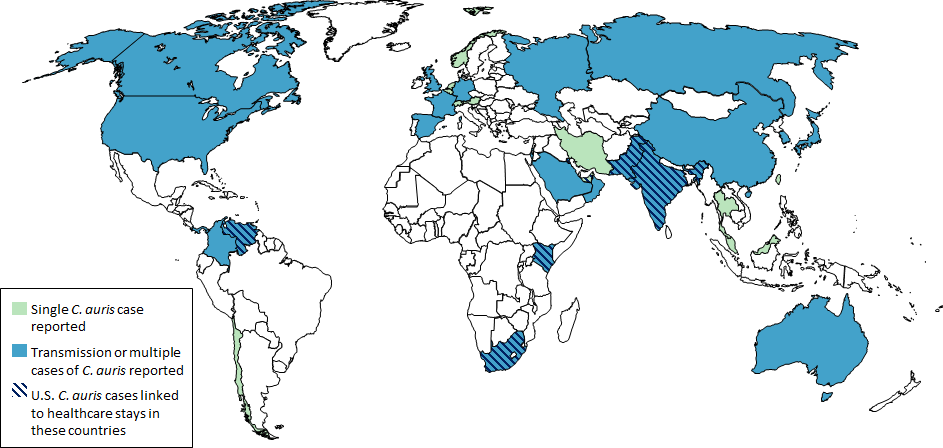Candida auris
is an emerging fungal pathogen that is often associated with outbreaks
of nosocomial infections. Antifungal resistance is common and
transmission can be hard to control, as standard disinfection procedures
are not sufficiently effective for this organism. C. auris is a notifiable infection in the US
Dr Natalia Barantsevich and colleagues describe a series of cases at an ICU in Moscow where C. auris was isolated from trauma patients.
The first C. auris isolate (fluconazole MIC 256 mg/L) they detected was from the urine of a 40-year-old patient in the ICU following a traffic accident. A further 49 cases were identified between Oct 2016 and Dec 2017, in patients who had undergone trauma (IV lines and urinary catheters were present in each case). However, monthly testing of the hospital environment, healthcare workers’ hands and devices did not recover any isolates.
None of the patients received antifungals other than fluconazole, despite fluconazole resistance being widespread (MIC50
of 256 mg/L). This was partly due to this group of patients already
having poor prognoses due to head injuries and other infections, but
partly also due to Russia lacking current guidelines for managing C. auris. The CDC recommends first line treatment with an echinocandin and advises on infection control measures. Of patients who developed candidaemia, the 30-day all-cause mortality rate was 42.1%.
Identification
was carried out using MALDI-ToF (Bruker Biotyper) as traditional
methods can result in misidentification (the CDC gives guidance on identifying C. auris).
Sanger sequencing was carried out for ITS and the D1-D2 large subunit
rDNA, and these were identical to other C. auris strains deposited in
NCBI GenBank. In addition the ERG11 gene was sequenced for four
isolates, showing a K143R point mutation typical of isolates from India
Pakistan (South Asian clade).
- Read the paper: Barantsevich et al (2019) Emergence of Candida auris in Russia

